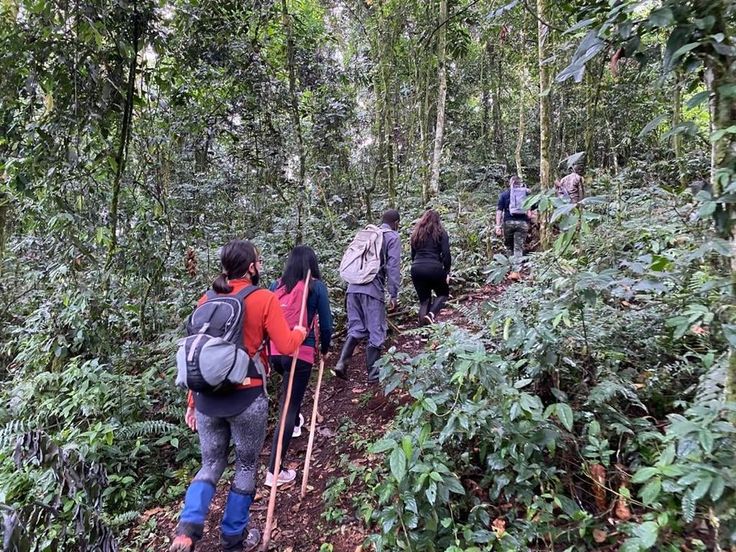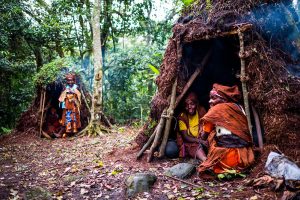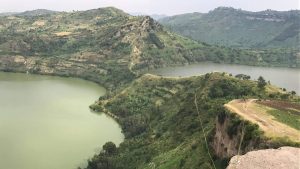Rwanda, known as the “Land of a Thousand Hills,” offers far more than just mountain gorilla trekking. Among its lesser-known but incredibly rewarding experiences is the walking safari — a thrilling, immersive way to explore Rwanda’s wildlife and landscapes on foot. Unlike traditional game drives, walking safaris allow travelers to experience the raw, unfiltered beauty of nature with all senses engaged — sight, sound, smell, and touch. Walking Safari in Rwanda.
In this blog, we explore where to enjoy walking safaris in Rwanda, what to expect, when to go, safety tips, and why this up-close wilderness adventure should be on your bucket list. Walking Safari in Rwanda.
What Is a Walking Safari in Rwanda?
A walking safari is a guided nature walk through wildlife habitats, led by experienced rangers or trackers. Instead of observing animals from the comfort of a safari vehicle, travelers walk alongside expert guides who interpret tracks, signs, sounds, and smells of the wild.
Walking safaris are about connection, not just sightings. You step into the rhythm of the wild, notice subtle movements, listen to bird calls, identify medicinal plants, and sometimes even track animals on foot. It’s a mindful, slower-paced way to connect with Rwanda’s ecosystems.
Where Can You Go on a Walking Safari in Rwanda?
Rwanda offers a few unique places to experience walking safaris. Each location brings its own type of landscape, wildlife, and adventure.
1. Akagera National Park – Rwanda’s Premier Walking Safari Destination
Akagera National Park in eastern Rwanda is the country’s top walking safari destination. Covering over 1,100 square kilometers of savannah, woodland, wetlands, and rolling hills, Akagera offers diverse wildlife and breathtaking scenery.
Walking safaris in Akagera are usually done in restricted areas, particularly around the southern part of the park near Lake Ihema and the park headquarters. These walks are guided by armed rangers for safety and offer opportunities to see:
- Giraffes
- Zebras
- Antelopes
- Warthogs
- Bushbuck
- Various bird species
- Small mammals and reptiles
Though large predators like lions and leopards are present in Akagera, walking safaris are conducted in zones where these animals are less active, ensuring safety.
2. Nyungwe Forest National Park – Forest Walks with Primates and Birds
If you’re more into tropical forest experiences, Nyungwe Forest offers some of the best guided forest walks in Central Africa. These are not classic walking safaris with big game but rather rich, biodiversity-packed treks.
Highlights include:
- Walking beneath towering trees in one of Africa’s oldest rainforests
- Spotting colobus monkeys, chimpanzees, and L’Hoest’s monkeys
- Birdwatching with over 300 species recorded
- Identifying medicinal plants and orchids with the help of a guide
- Experiencing the famous Canopy Walkway, suspended 60 meters above the forest floor
Nyungwe walks are ideal for travelers interested in botany, birding, and primates rather than traditional safari animals.
3. Volcanoes National Park – Hike with Purpose
While Volcanoes National Park is best known for gorilla trekking, it also offers nature walks and volcano hikes, such as those up Mount Bisoke or Mount Muhabura. These are more strenuous and scenic than wildlife-focused, but you’re still in wild terrain, surrounded by the sights and sounds of mountain ecosystems.
You may come across:
- Golden monkeys
- Bushbuck
- Small mammals
- Unique alpine flora
- Panoramic crater lakes at the summit
This type of walking safari is best suited for those with good fitness levels and a love for mountain adventures.
What Can You Expect During a Walking Safari in Rwanda?
Walking safaris in Rwanda are highly informative and safe. You’re typically accompanied by an armed park ranger and sometimes a local community guide or tracker who understands the terrain intimately.
During the walk, expect:
- Interpretations of animal tracks, dung, and calls
- Plant identification and explanations of traditional uses
- Birdwatching and photography opportunities
- Sightings of small game and possibly larger herbivores
- A peaceful and uncrowded safari experience
Walks typically last between 1 to 3 hours, depending on the trail and group preference.
When Is the Best Time to Go on a Walking Safari in Rwanda?
Rwanda offers walking safaris year-round, but the best times are during the dry seasons:
- June to September
- December to February
These months have less rainfall, making trails more accessible and improving visibility in savannah areas like Akagera. Forest walks in Nyungwe are also more enjoyable without slippery paths and thick mud.
However, the green season (March to May and October to November) brings lush scenery and fewer tourists — great for those who don’t mind a bit of rain and want more solitude.
Is a Walking Safari Safe in Rwanda?
Yes — walking safaris in Rwanda are safe and professionally managed. Park authorities follow strict safety protocols, and all walks are guided by trained rangers who carry firearms in case of emergencies. Guides also undergo wildlife behavior training and first aid certification.
Key safety rules include:
- Walking silently and in single file
- Following the guide’s instructions at all times
- Avoiding sudden movements
- Wearing neutral-colored clothing
- Carrying sufficient water and protective gear like hats and sunscreen
You’re in good hands — but always respect the wild.
What Should You Pack for a Walking Safari?
To enjoy your experience fully, bring the right gear:
- Comfortable hiking boots
- Lightweight, breathable clothing (long sleeves recommended)
- Hat and sunglasses
- Sunscreen and insect repellent
- Binoculars for birding and spotting wildlife
- Camera with zoom lens
- Water bottle or hydration pack
- Light rain jacket, especially in forested areas
Why Should You Choose a Walking Safari in Rwanda?
Walking safaris offer a deeper and more personal safari experience compared to game drives. Here’s why they’re worth adding to your Rwandan itinerary:
- You learn more about ecology, tracking, and animal behavior
- They’re perfect for photography and birding
- They create stronger connections with the environment
- They support eco-tourism and conservation efforts
- They are low-impact, making them ideal for sustainable travel
In short, walking safaris allow you to see Rwanda differently — not just as a destination but as a living, breathing ecosystem.
Step Off the Beaten Path
A walking safari in Rwanda is an opportunity to step into the wild with fresh eyes and open senses. Whether you’re strolling through the savannahs of Akagera, trekking beneath ancient trees in Nyungwe, or hiking volcano trails in the Virunga range, Rwanda offers walking adventures as unique as the landscapes themselves.
If you’re planning a trip to Rwanda and want to do more than just see wildlife — if you want to feel the pulse of nature under your feet — then a walking safari is the perfect experience for you.




